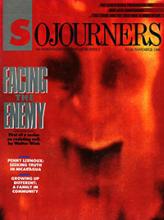When we arrived at London's Heathrow Airport, a television camera crew was waiting. The other passengers on the plane, curious about who was being filmed and why, began to talk among themselves. Dennis Marker, my assistant and traveling companion, turned to some of them and said, "We're Americans."
The laughs from the mostly British passengers showed that they got the joke. American tourism, always so common to Britain, was at an all-time low because the Yanks were afraid of terrorism following the U.S. raid on Libya which Mrs. Thatcher had obediently supported. Thus, few Americans were in the mother country this summer and the few who were became somewhat of an anomaly.
This summer Britain enjoyed one of its warmest and loveliest seasons in years. And the reception we received to our month-long speaking tour of England, Scotland, and Wales was even warmer.
We traveled a total of 3,000 miles and visited 15 cities. In 30 days, I gave approximately 100 talks and 50 interviews. A wonderfully ecumenical planning process, involving many church bodies and organizations, a national steering committee, and local committees, had been active for more than three years. Throughout the tour everyone remarked that it was the first time such a broad range of Christians and churches had been drawn together to work on a common project. Evangelicals were involved along with mainline church leaders and the British Council of Churches. Anglicans, Methodists, and Baptists joined together with Roman Catholics and house church charismatics. Most significant, in my view, was the cooperation between black and white churches which many regarded as a new beginning.
Read the Full Article

